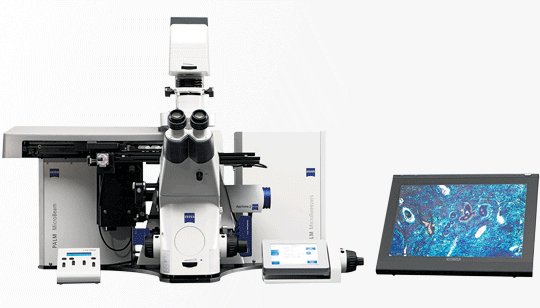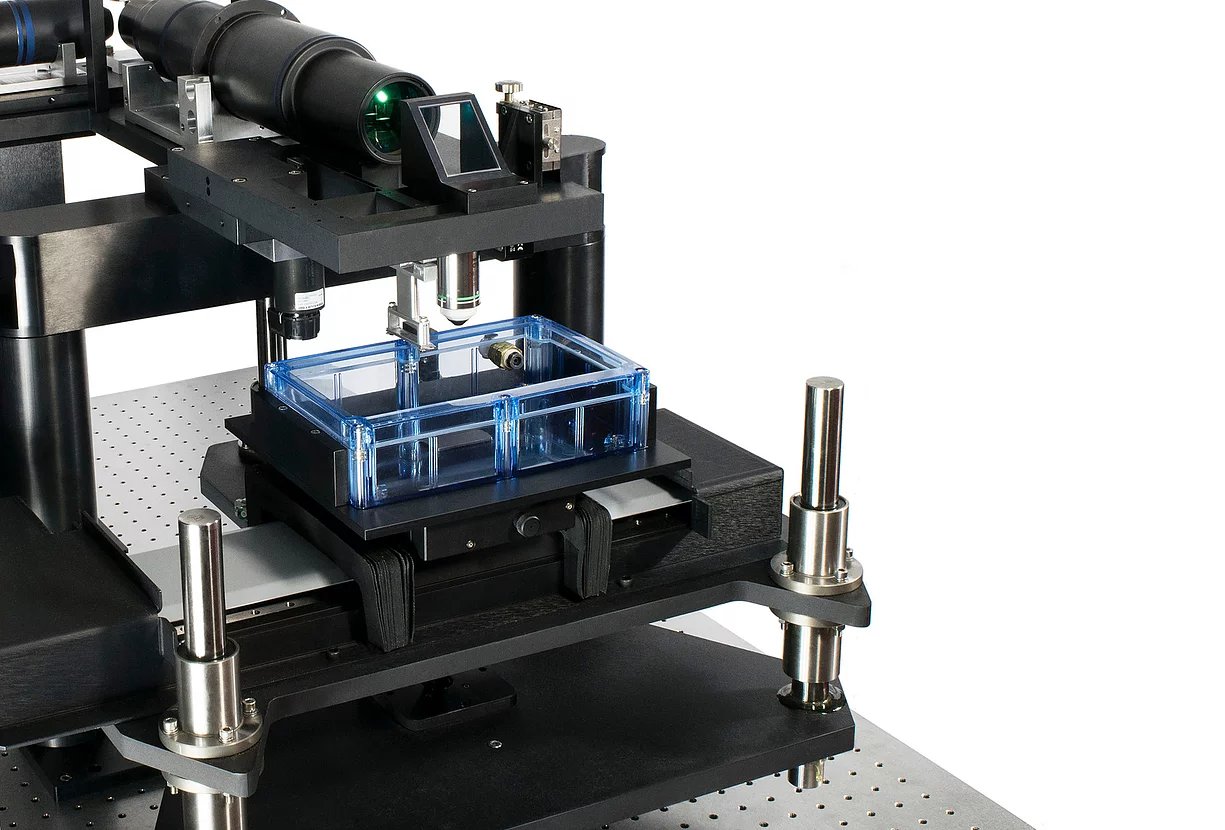The Leica 3x STED/FLIM system is a super resolution microscope based on the Leica SP8 confocal microscope. It has a guaranteed resolution of 100 nm though the system has been routinely achieving 50 nm. We recommend referencing the accepted dye list and sample prep notes by Leica (https://www.leica-microsystems.com/science-lab/the-guide-to-sted-sample-preparation/) for STED.
The Fluorescent Life Time (FLIM) imaging has the ability to measure the decay rate of your probes. As the fluorescence lifetime does not depend on concentration, absorption by the sample, sample thickness, photo-bleaching and/or excitation intensity it is more robust than intensity based methods.
The confocal is equipped with multiple excitation lasers including a continuum fiber laser that can deliver up to 8 simultaneous lines of any wavelengths between 470 and 670 nm. It has 4 detectors, two of which are high-sensitivity Hybrid detectors. It can be operated in STED, FLIM or standard confocal mode. Feature highlights include:
- White light laser: continuous excitation tuning from 470 nm to 670 nm, Argon Ion Laser with 457, 477, 488 and 514 nm lines, 405 nm DPSS laser
- 594nm, 660nm and 770nm Depletion laser
- 4 HyD and 3 PMT detectors
- Transmitted light detector
- Objective lenses:10x dry, 20x dry, 40x oil, 63x oil for confocal, 100x oil.
- Tokai hit incubation chamber
- Navigation for tilescans
- Laser-based autofocus










